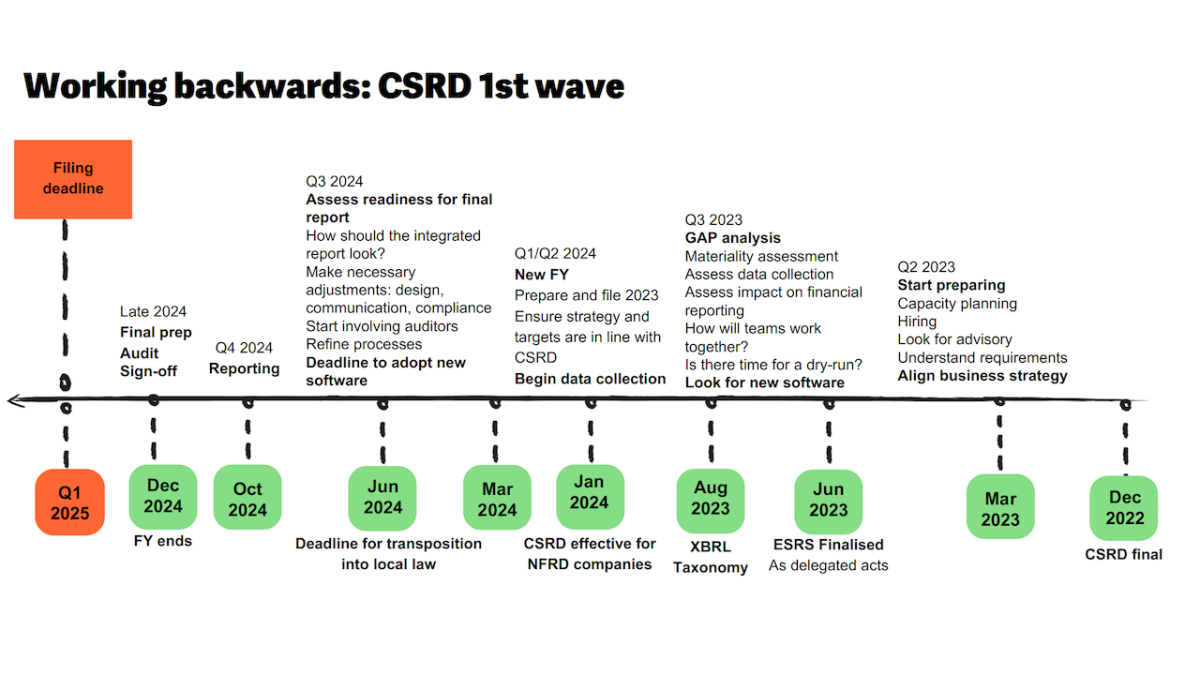Five Steps to Integrated Reporting
Originally published on Workiva
Editor's note: With our Europe-wide Accelerate event series coming up in April-May, now is the time to embrace unity in reporting. Here, our expert speaker Andromeda Wood (Vice President of Regulatory Strategy, Workiva) breaks down the whats, hows and whens of integrated reporting readiness.
By Andromeda Wood, Vice President of Regulatory Strategy, Workiva
The global move towards integrated financial and sustainability reporting is building momentum. But what exactly is ‘integrated reporting’, and how should a company prepare for it?
The term integrated reporting has already been around for some time, often used in reference to an annual report covering both financial and sustainability information. Over the past decade, the IIRC—now part of the IFRS—has worked to solidify integrated reporting as a more robust concept, whereby the report itself is reflective of real integration within the business.
As our understanding of sustainability has matured, this idea has become both a goal and a regulatory imperative. This is now being illustrated more clearly than ever with the CSRD, which is requiring companies in scope to adopt integration as they prepare to meet new guidelines.
For these organisations, the clock is now ticking to bring financial and sustainability reporting onto an equal footing. Those not in scope, meanwhile, have the opportunity to learn from this implementation phase among their peers and bolster their own reporting. With this in mind, let’s take a look at five key steps to integrated reporting readiness.
Step 1: Set and define your goals
First, you need to understand exactly what your organisation is aiming towards. Whether you are preparing to align with mandated or voluntary requirements, ensure you know precisely what you need to be reporting on, how you should be reporting on it and by when. If you’re working towards mandate reporting then are you clear about how much of your organisation is in scope, which entities will be required to report and how many will need to contribute data?
Alongside this, also think about your strategic goals surrounding not just your reporting, but your sustainability practices as a whole. How are you planning to go beyond compliance and drive value for your organisation, and how do these aims align with your existing business model?
Step 2: Apply the principles of double materiality
Double materiality—the consideration of both one’s own internal interests alongside external impacts—is one of the core concepts of the European Sustainability Reporting Standards (ESRS), which provide detailed instructions on how to report on sustainability issues in this manner.
As you dive into your reporting strategy, apply these same principles to examine your processes, aims and objectives. Start with your company’s existing materiality assessment and expand this to include all the internal and external stakeholders throughout the life cycle of an integrated report, identifying key areas of risk, opportunity and potential positive and negative impact.
Step 3: Assess your current state
Next, you’ll need to assess what needs changing in order to meet your aims. The amount of time you’ll need to get up and running with a more integrated reporting process will depend on your company’s size and ESG maturity level. However, you may well need to re-evaluate your people, processes and technology to meet the raised bar set by the standards, audit requirements and long-term aims of integrated reporting.
Starting from your goal date, work your way back, taking into account everything that will need to be done, from the assessment and restructuring of processes, to the time your team members will need to adapt to new technology and processes, to report creation and tagging requirements.
This assessment should be a dynamic and regular process, segueing directly into readiness actions while being continually revised to keep your processes in line with your aims and the current state of reporting.



